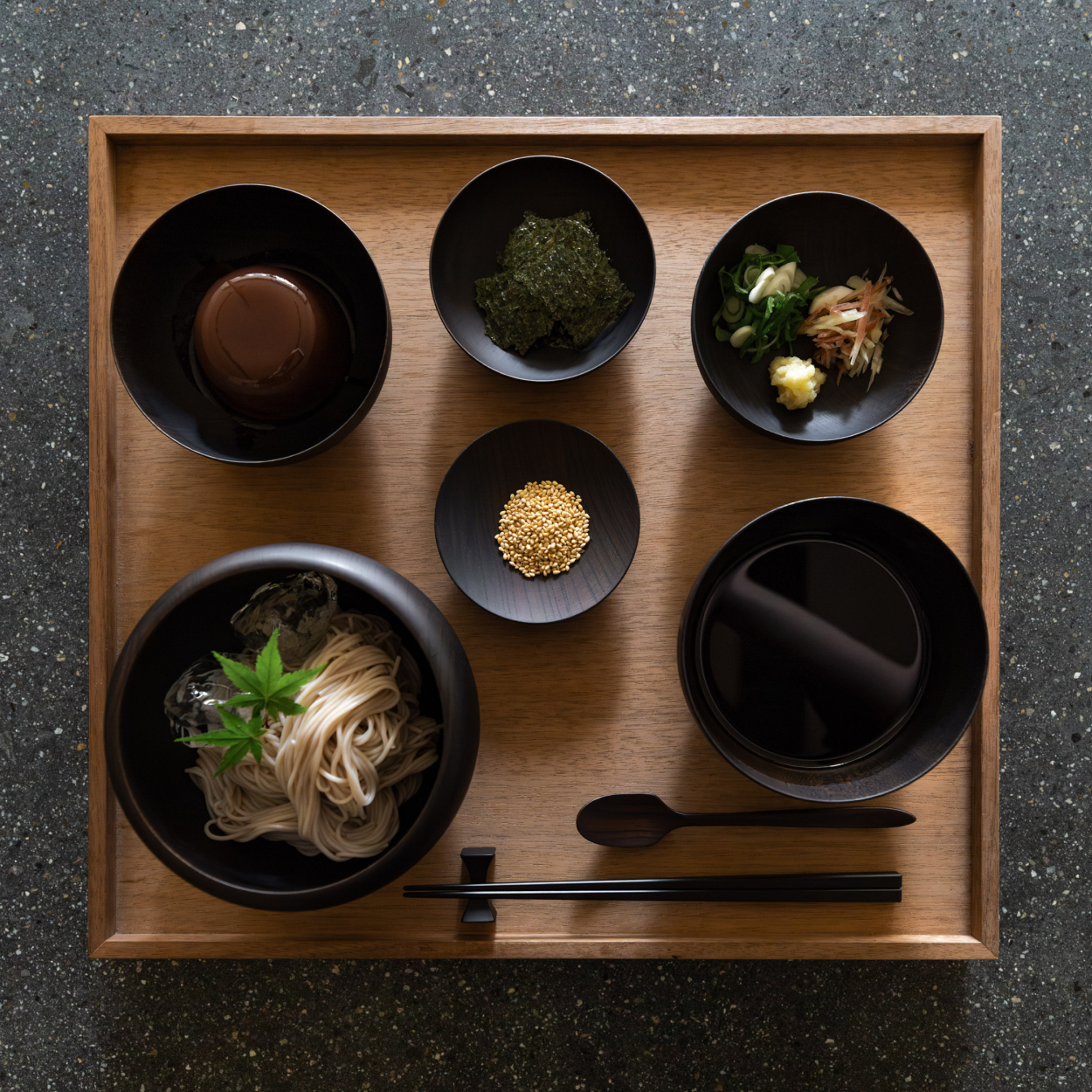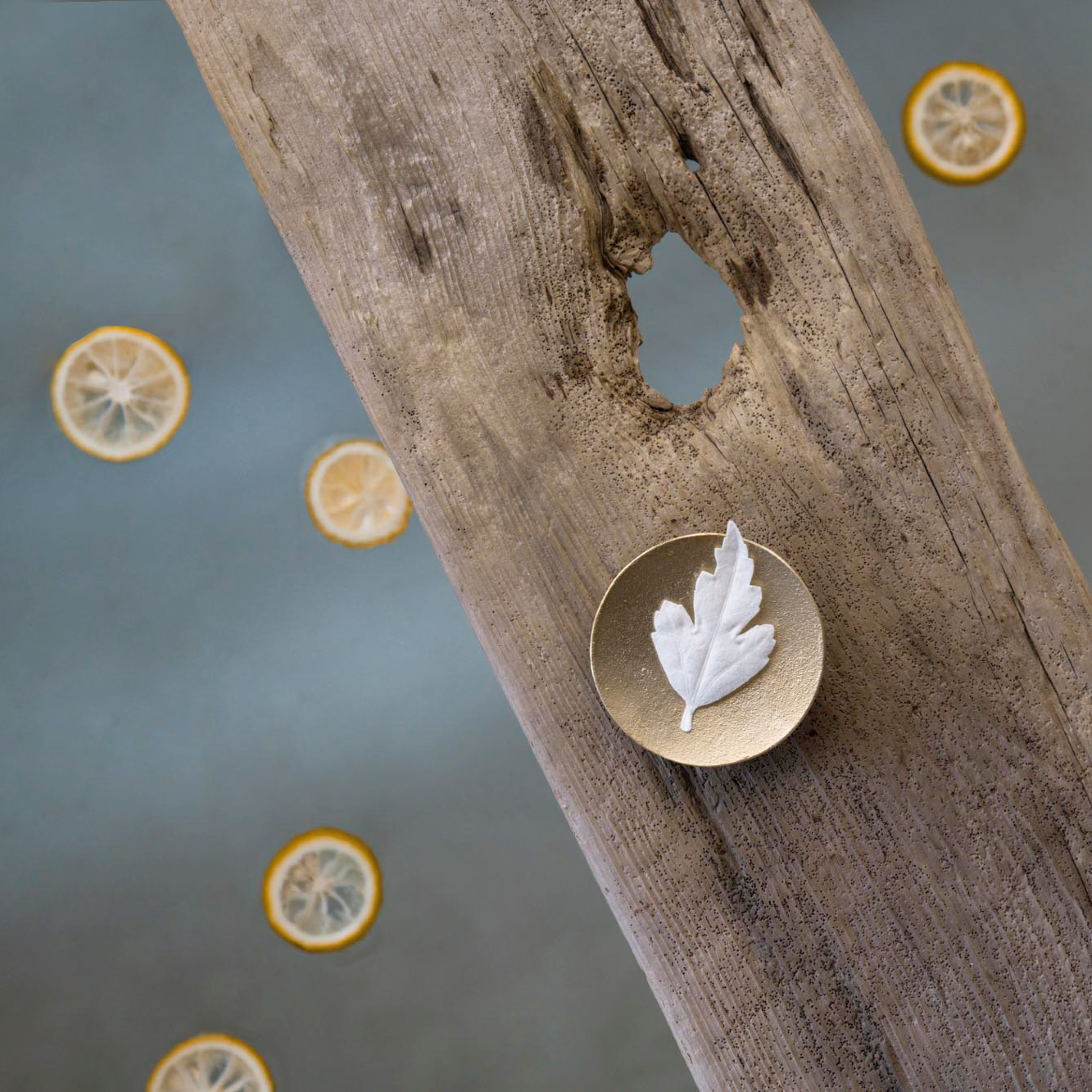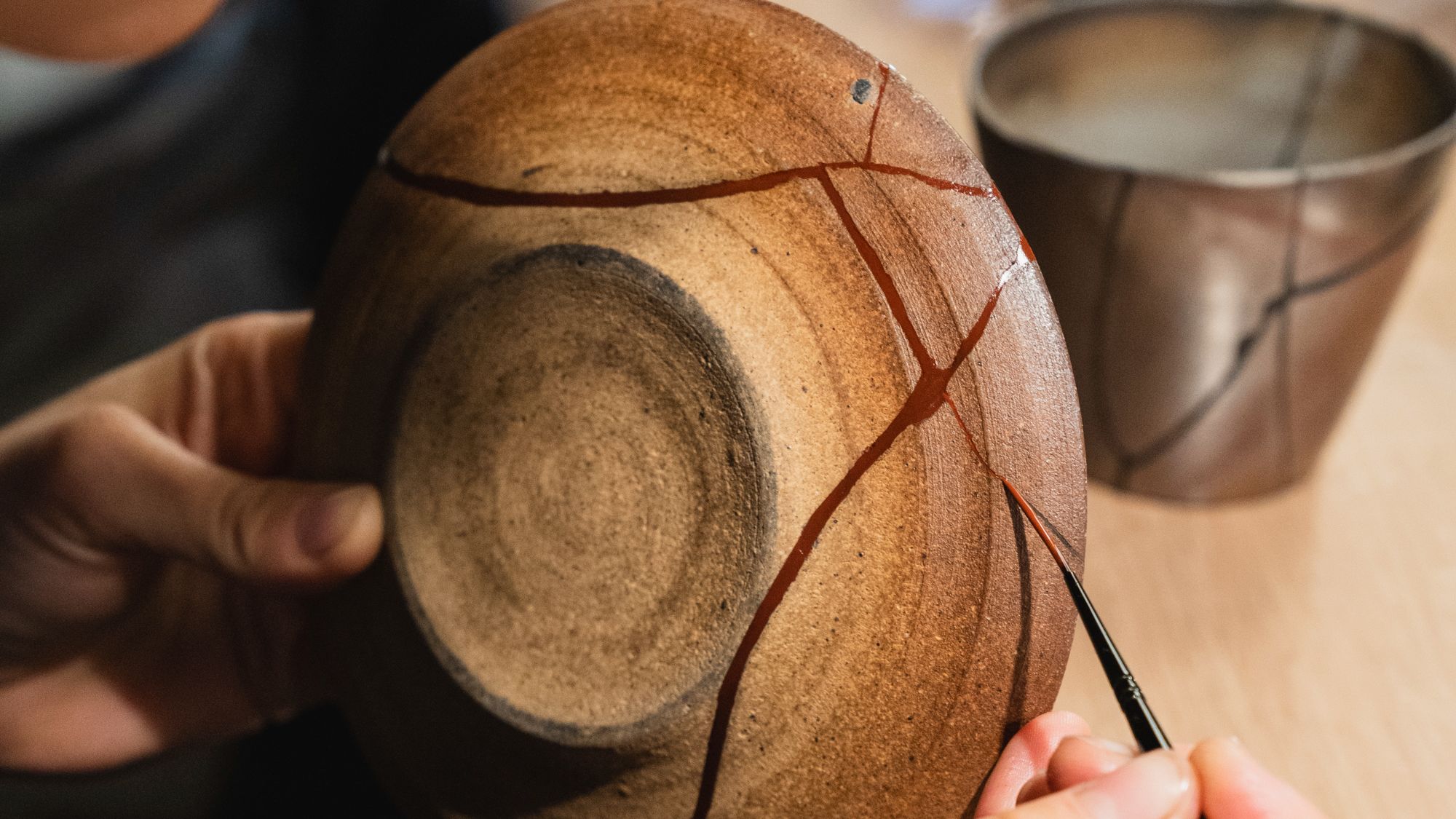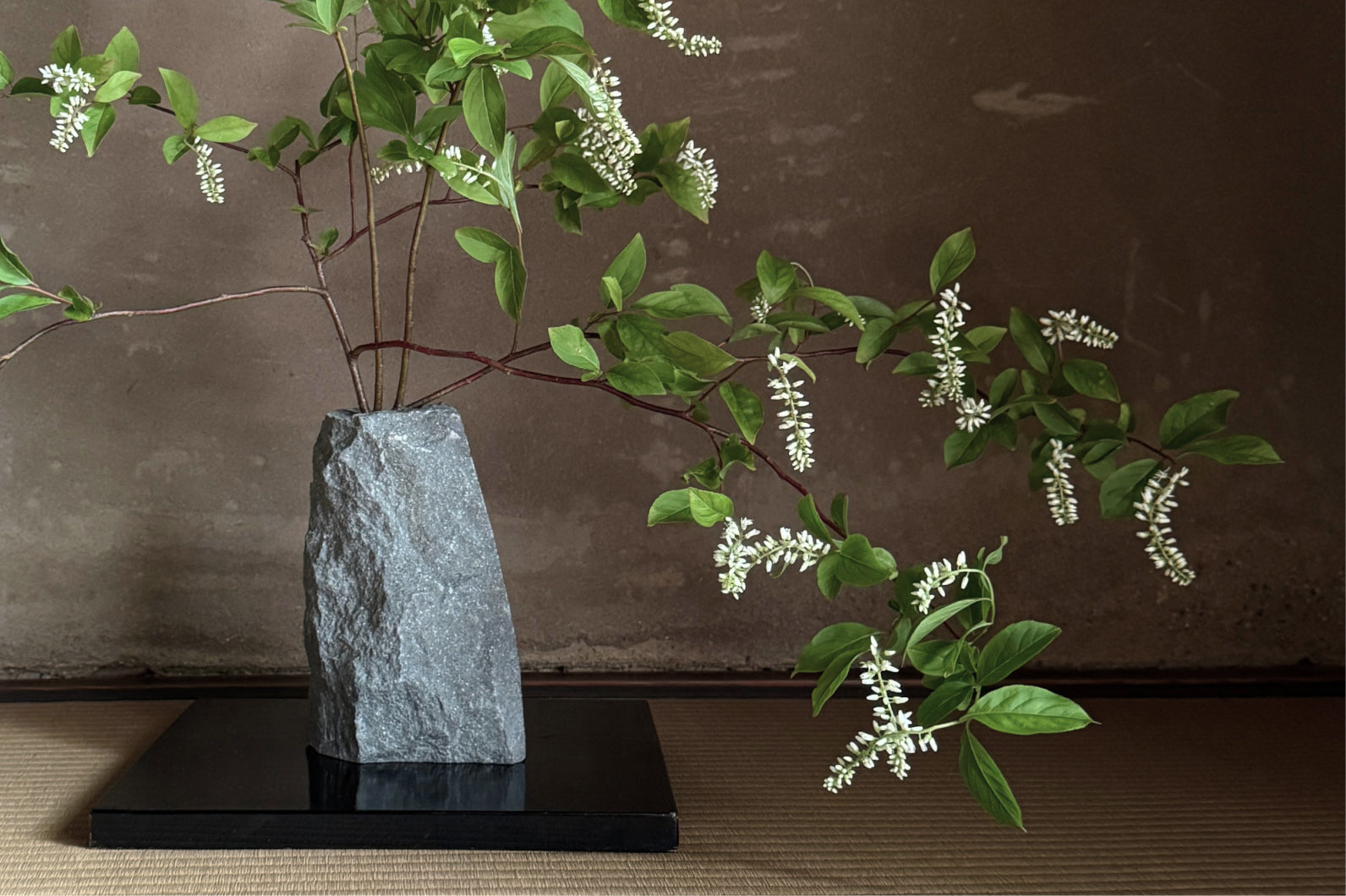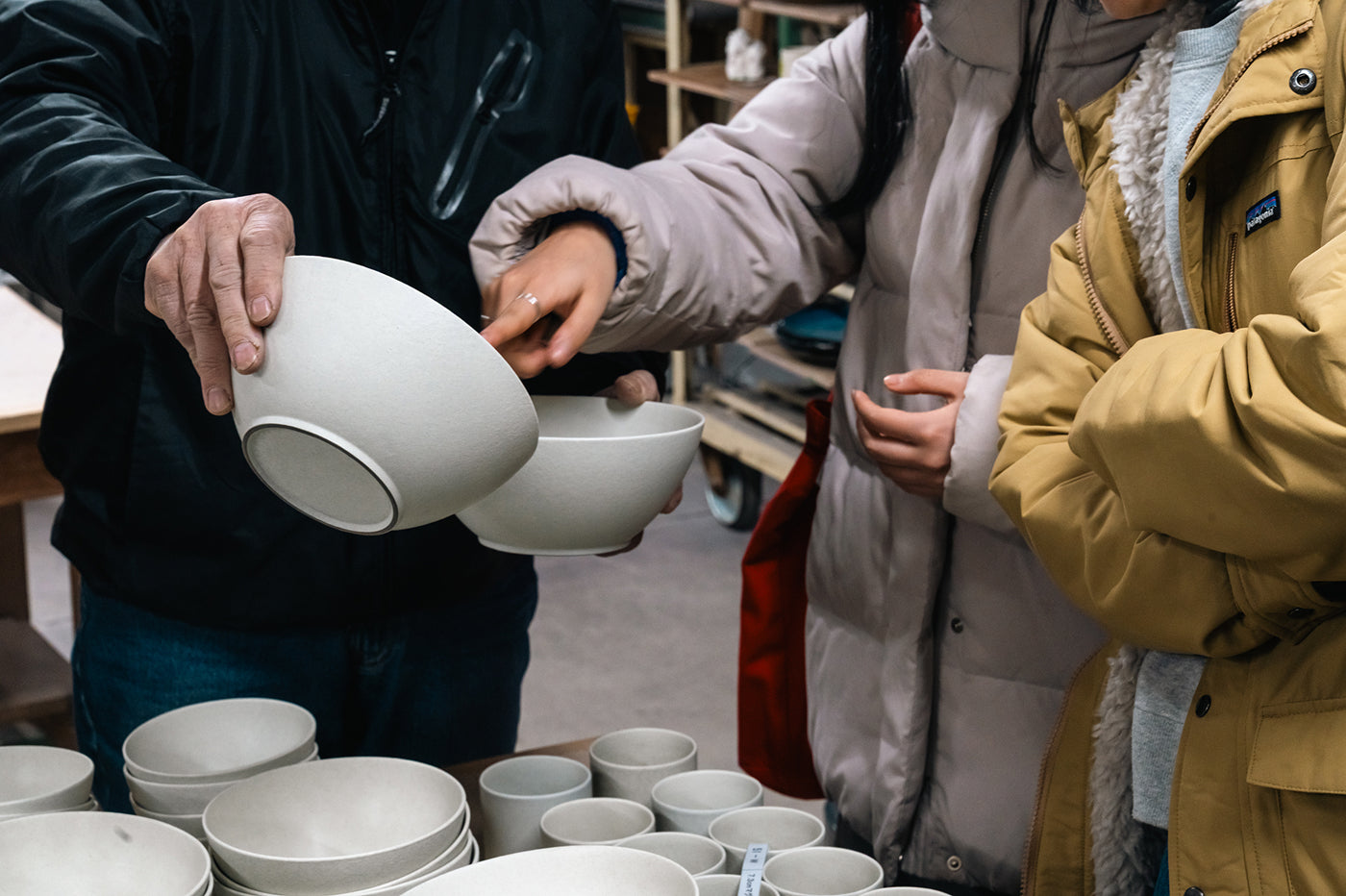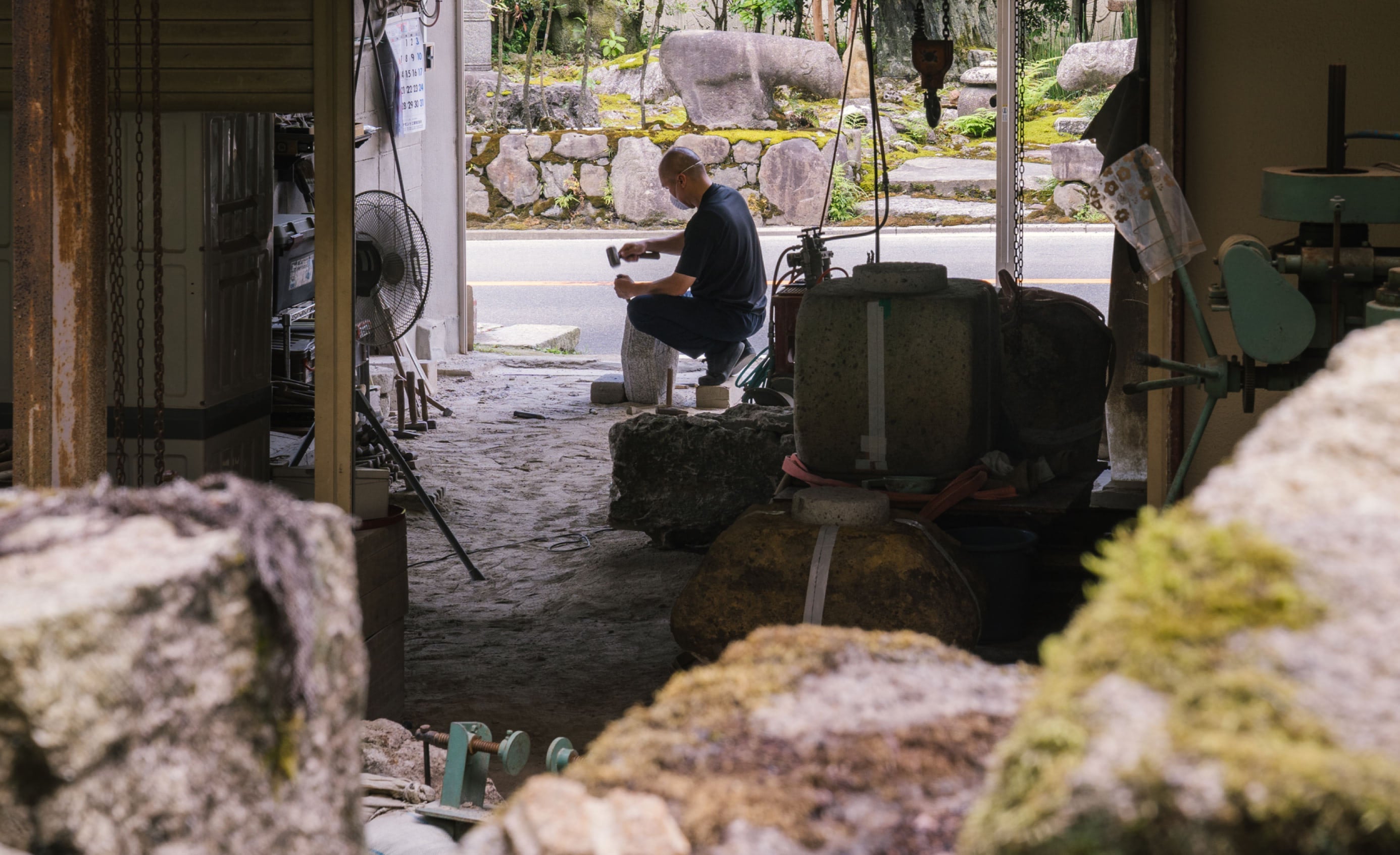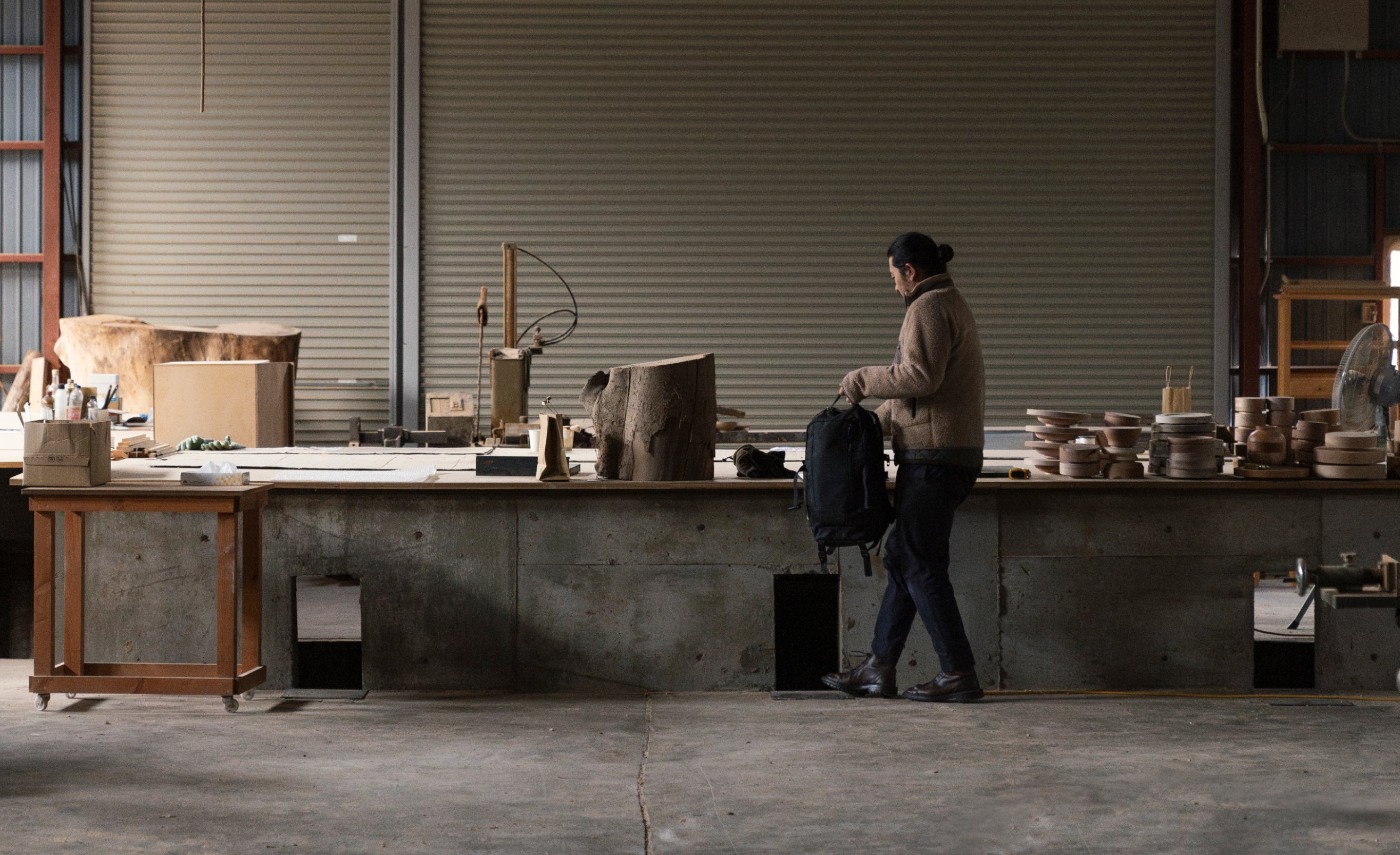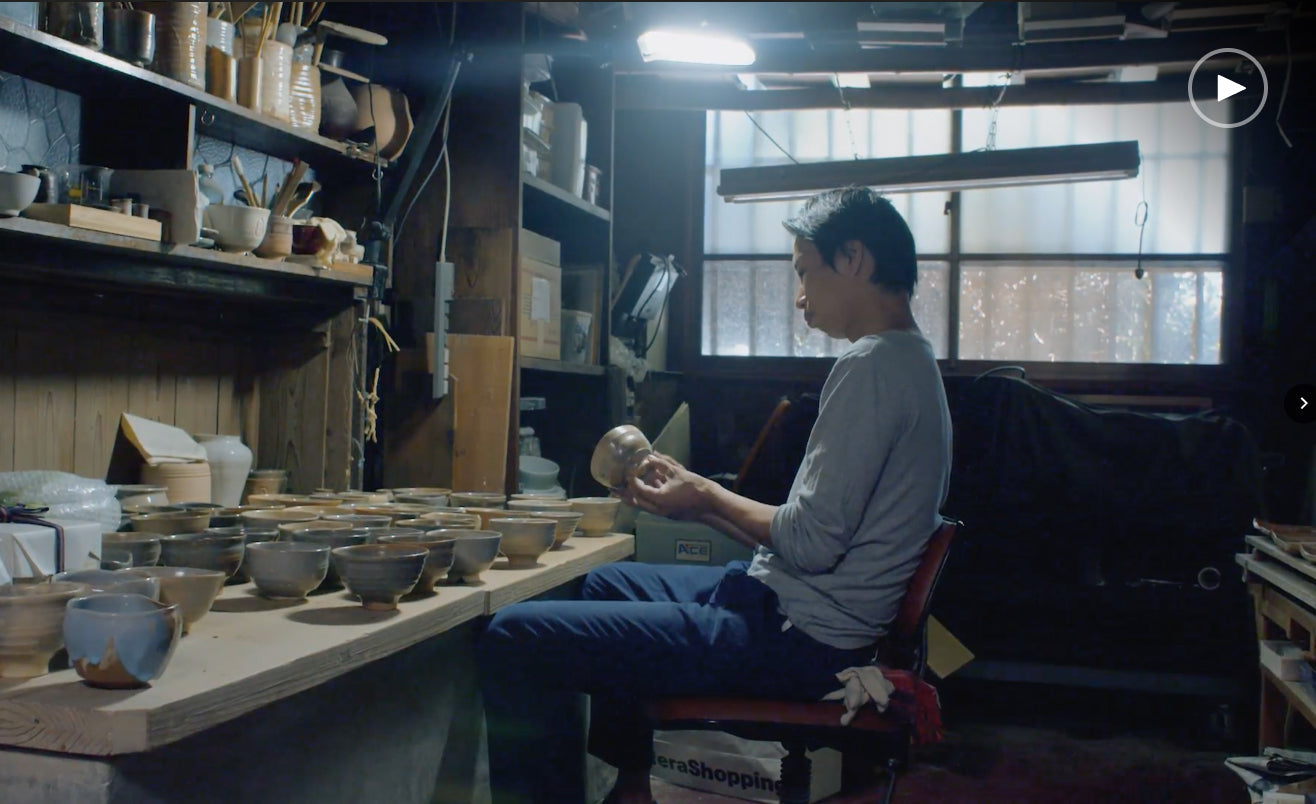This post is one of a three part series:
Part 1: Mugi urushi
Part 2: Sabi urushi
Part 3: Red and black urushi
Once mugi urushi has been used to glue the broken fragments together, and sabi urushi has been used to fill the nooks, crannies, and crevasses, phase 3 of the repair process is to apply red and black urushi that serves as the final sealant.
In this final phase eurushi (red urushi) and kuroroiro (black urushi) are used in alternating layers. This process fills any microscopic holes that may exist in the repair work in the layers below, ensures a waterproof and durable sealant, and creates a smooth and taut surface for the metallic powder finish if you choose to use one.
Alternating the two colors helps the repairer work with greater visual clarity. Starting with eurushi allows for clearer visibility when applying to the dark colored sabi urushi.
Step 1
Apply eurushi over the fracture using a thin brush. Then cure the piece for 1 week.
Tip: When sealing a larger surface area, start by using a thin brush to outline the perimeter, and then use the flat brush to nudge the urushi inward to fill the rest of the surface area.
Tip: It is of utmost importance to apply a thin layer (depth, not width) of eurushi (and kuroroiro). Being too generous with either can cause the urushi to dribble before hardening, or to shrivel, a process wherein the outer layer of the urushi hardens into a textured surface and the inner layer remains wet.

Step 2
Gently wet sand the eurushi with 1000-15000 grade sandpaper.
Tip: The sanding process is not aggressive; leveraging water and the texture of the sandpaper. Keeping an eye on the red urushi as it evolves from shiny to matte finish.
Step 3
Apply kuroroiro over the fracture. Cure for 1 week.
Tip: Because black urushi is more translucent than red urushi, it is easy to over-apply in the layering process, so it must be approached with teinei , or purposeful intention.
Step 4
Gently sand the kuroroiro to a matte finish following the same procedure as in Step 2.
Step 5
Apply eurushi over the fracture. Then cure the piece for about 20 mins in a well-maintained muro.
Tip: Continue to be mindful of applying the thinnest layer of urushi. If the urushi is applied too heavily, the gold or silver powder will simply sink to the bottom when applied.
Step 6
Apply the metallic powder of your choosing to your repair.
Read more detailed instructions on applying metallic powder.
Tip: When choosing to finish the repair with gold, the last layer of urushi should be eurushi, which helps the gold to pop. When finishing the repair with silver, the final layer of this last phase will be kuroroiro, the black backdrop supports the silver to appear its very best.

